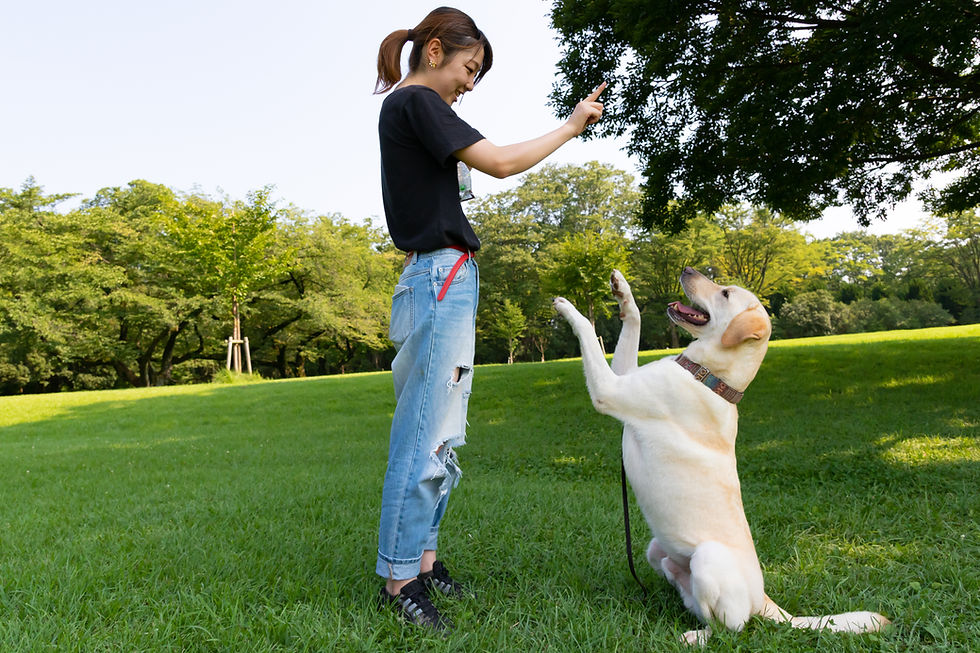What is the hardest part of training a dog?
- Subhodip Unitel
- Sep 17, 2024
- 3 min read
Dog training can be both rewarding and challenging. Understanding the most difficult aspects can help you prepare better and make the training process smoother. In this blog, we’ll explore the common obstacles in dog training and offer valuable tips to overcome them.

Understanding the Challenges in Dog Training
Training a dog involves more than just teaching basic commands. It requires patience, consistency, and knowledge of effective techniques. Let’s dive into the most challenging aspects of dog training and how to address them.
1. Consistency in Training
One of the hardest parts of training a dog is maintaining consistency. Dogs thrive on routine, and inconsistent training can confuse them. Whether you are teaching basic commands or working on more advanced skills, sticking to a consistent approach is crucial.
Tip: Create a structured schedule for your dog training sessions. Use the same commands and rewards each time. This helps your dog understand what is expected and reinforces learning.
2. Behavioral Issues
Behavioral dog training often presents significant challenges. Addressing behavioral problems such as barking, chewing, or aggression requires a deep understanding of canine psychology and effective techniques.
Tip: For persistent behavioral issues, consider seeking help from professional dog trainers. They can offer tailored strategies to address specific problems and improve your dog’s behavior.
3. Lack of Time
Many dog owners struggle with finding the time to dedicate to training. Balancing work, family, and other responsibilities can make it difficult to stay committed to a regular training schedule.
Tip: Incorporate training into your daily routine. Short, frequent training sessions can be more effective than longer, infrequent ones. Even a few minutes a day can make a big difference.
4. Managing Expectations
Training a dog requires setting realistic expectations. Some dogs learn quickly, while others may take more time. Patience is key. Expecting instant results can lead to frustration and undermine the training process.
Tip: Set small, achievable goals and celebrate progress along the way. Recognize that each dog is unique and learns at their own pace.
5. Communication Barriers
Effective dog training hinges on clear communication. Dogs don’t understand human language, so you must use body language, tone of voice, and consistent commands to convey your message.
Tip: Learn to interpret your dog’s body language and adjust your communication style accordingly. Use positive reinforcement to reward good behavior and build a strong bond with your dog.
Solutions to Common Dog Training Challenges
1. Enroll in Dog Training Programs
Participating in dog training programs can provide structured learning and support. These programs often offer comprehensive training techniques and strategies for various issues.
Tip: Look for dog training programs that offer a balance of theoretical knowledge and practical exercises. This can enhance your understanding and application of training techniques.
2. Seek Professional Dog Trainers
For complex issues or if you’re new to dog training, consulting professional dog trainers can be invaluable. They bring expertise in canine obedience and can tailor their approach to meet your dog’s needs.
Tip: Research local professional dog trainers in your area. Choose trainers with good reviews and a track record of success in addressing similar challenges.
3. Utilize Dog Training Tips and Tricks
Incorporating various dog training tips and tricks can enhance your training sessions. Simple techniques like using treats, positive reinforcement, and clear commands can make a significant difference.
Tip: Stay updated on the latest dog training tips and tricks. Many resources are available online, including blogs, videos, and forums, where you can learn new techniques and strategies.
The Role of Canine Obedience in Training
Canine obedience forms the foundation of effective dog training. Teaching your dog basic commands such as sit, stay, and come helps establish control and communication.
Tip: Focus on teaching one command at a time. Practice regularly and reward your dog for successful execution. Building a strong foundation in canine obedience will support more advanced training efforts.
Conclusion
Training a dog presents several challenges, from maintaining consistency to addressing behavioral issues. By understanding these difficulties and applying practical solutions, you can create a positive and effective training experience for your dog. Enrolling in dog training programs, seeking help from professional dog trainers, and incorporating canine obedience principles are key steps to success.
For those seeking expert guidance in dog training in North London, consider reaching out to Doggle. Their professional dog trainers offer tailored programs designed to address specific needs and enhance your dog’s training journey. With their support, you can overcome the challenges of dog training and achieve lasting results.


Comentários